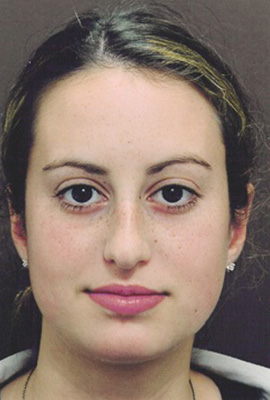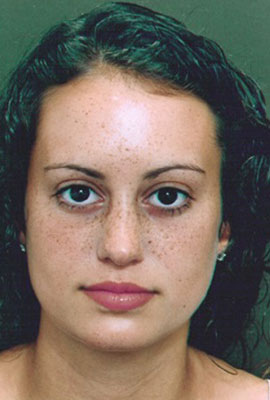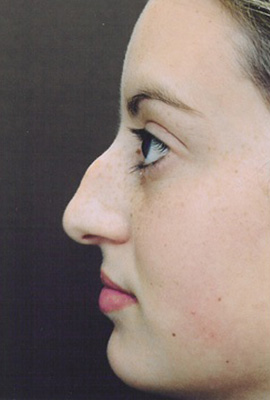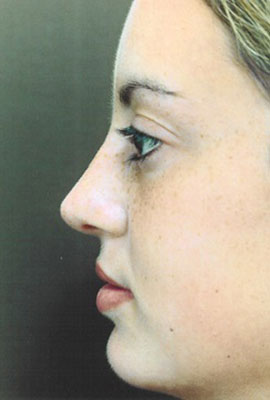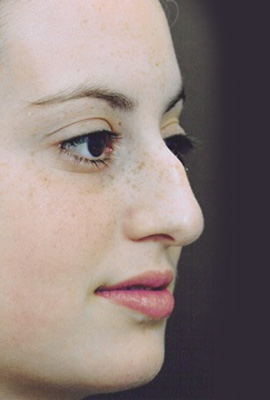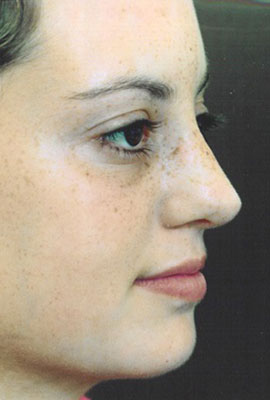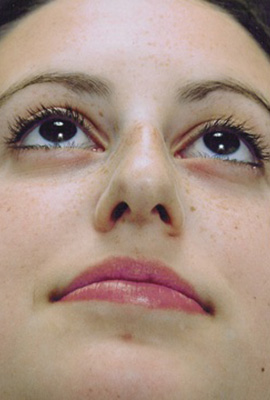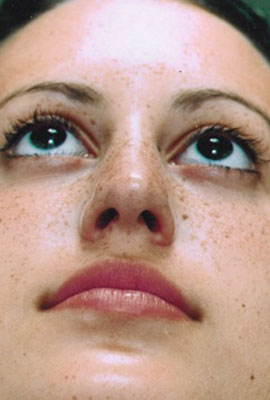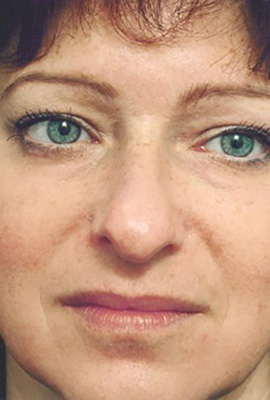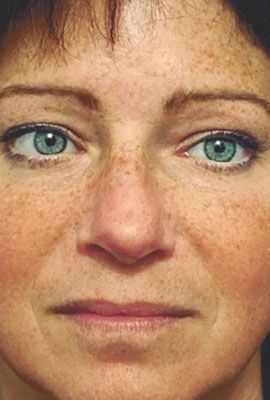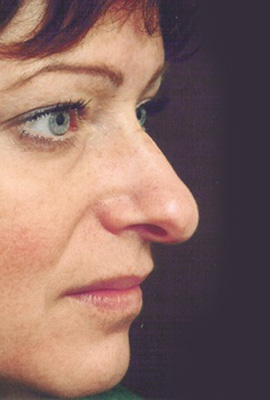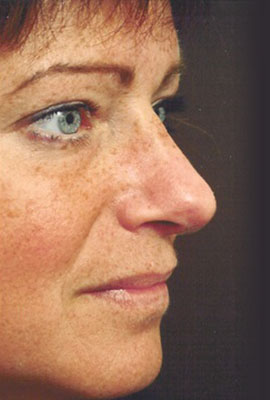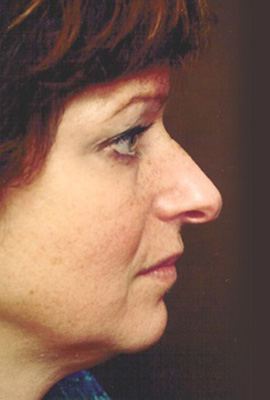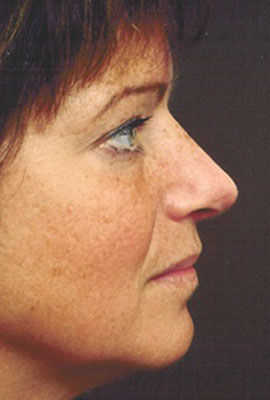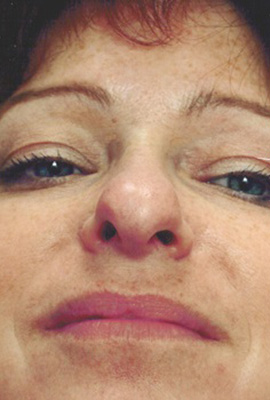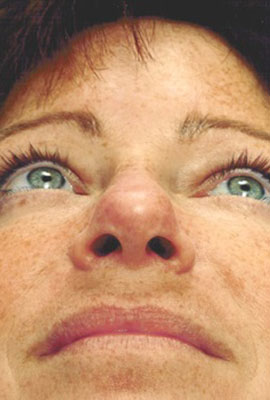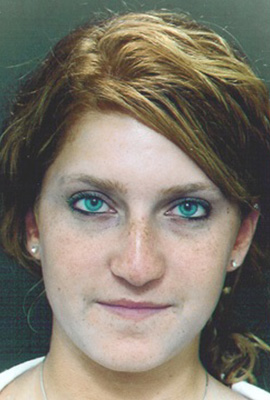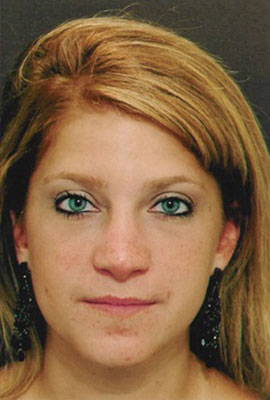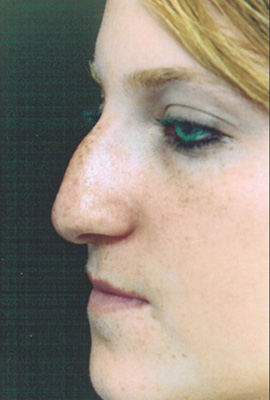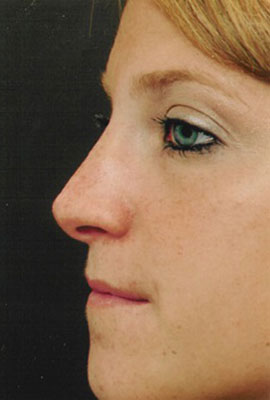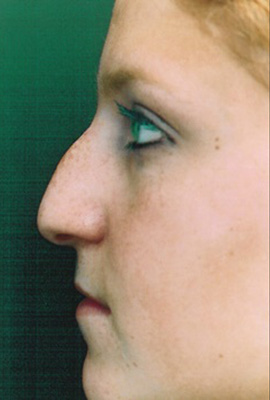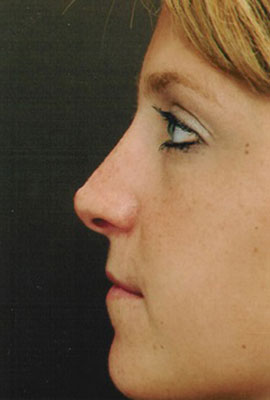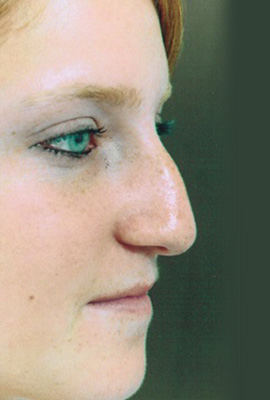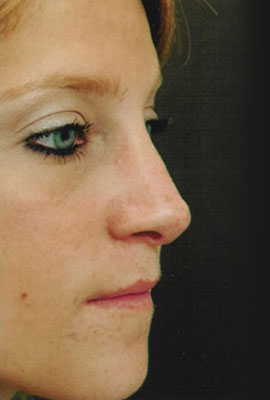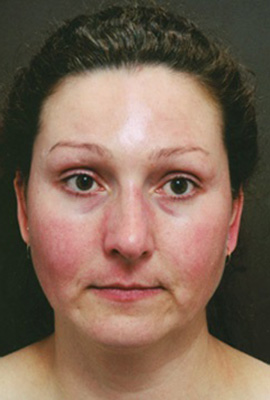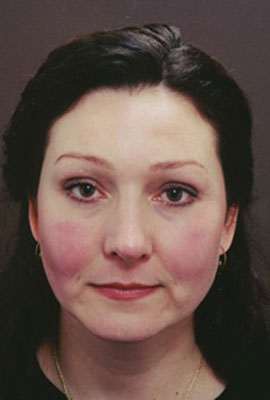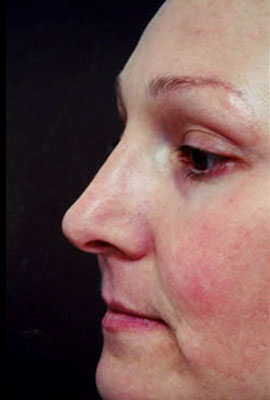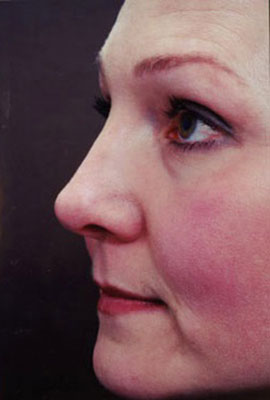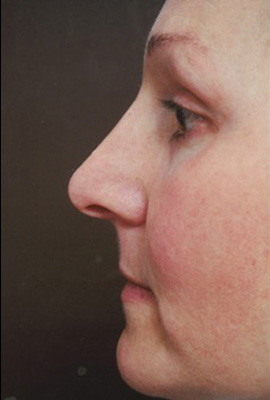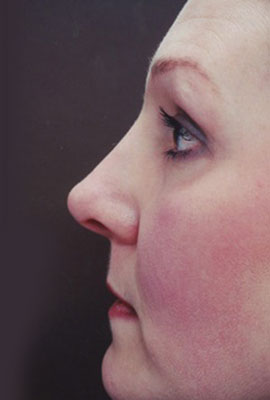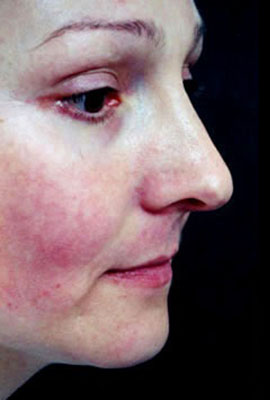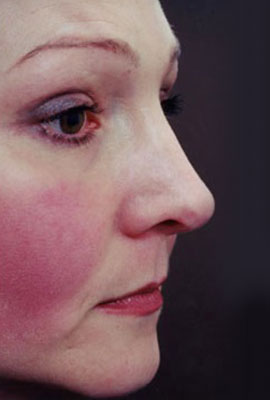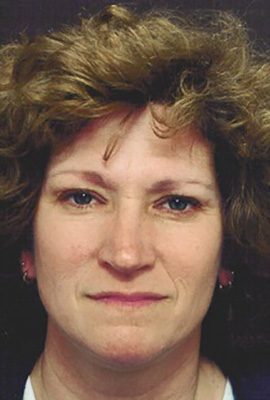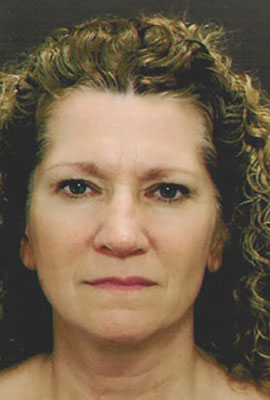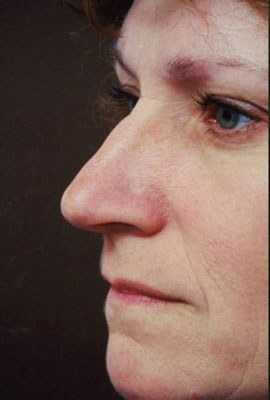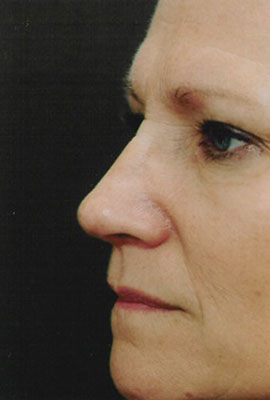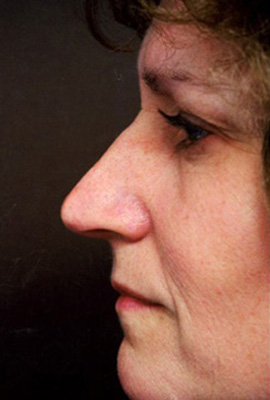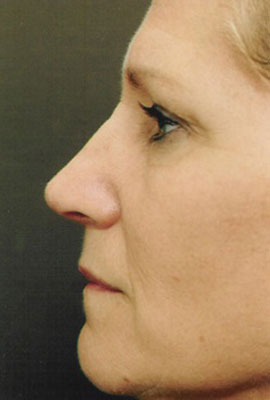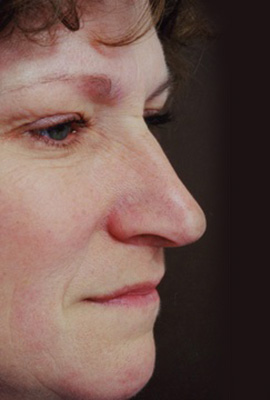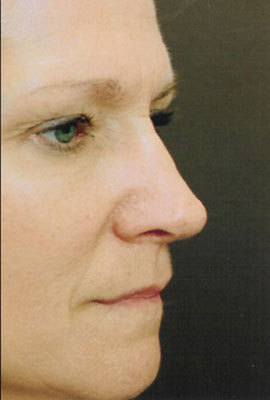Primary Rhinoplasty Patient 11
Description:
This patient has a low upper bridge, high mid bridge, and flat tip. The high areas were reduced and the low areas supported to give a balanced, refined profile line.
Primary Rhinoplasty Patient 12
Description:
This patient’s tip cartilages were large and convex; her nose was long. The nose was brought into better balance and the tip re-contoured. The slightly higher bridge reduces the apparent size of the lower nose, without sacrificing normal surface contours.
Primary Rhinoplasty Patient 13
Description:
This patient’s bridge was high and her tip flat and hanging. Upper lip position was improved; the nasal base brought forward; and the bridge straightened. Only small changes can make dramatic improvements in an unattractive nose for an otherwise pretty young woman.
Primary Rhinoplasty Patient 14
Description:
This patient has a difficult problem, an asymmetrical nose with a straight bridge. Minor adjustments (reductions and septal cartilage augmentations) have improved symmetry, airway, and provided a more feminine appearance.
Primary Rhinoplasty Patient 15
Description:
This patient’s preoperative complaint was that ‘the tip of my nose sticks out too far.’ That is primarily a balance issue. Slight reductions and rebalancing with septal cartilage have created better contour and also provided the illusion that the lower nose is significantly smaller.
